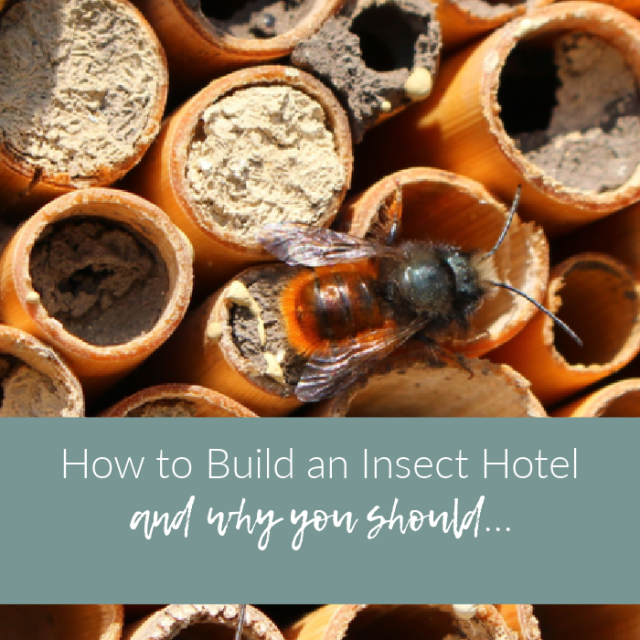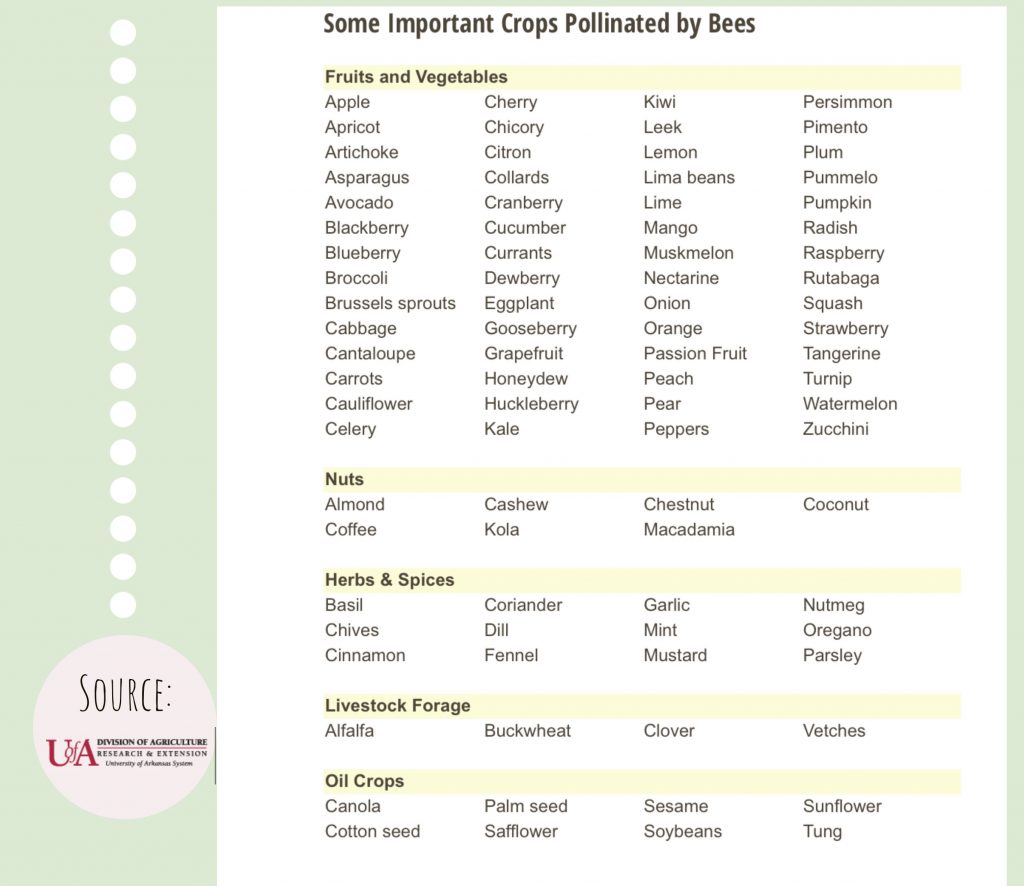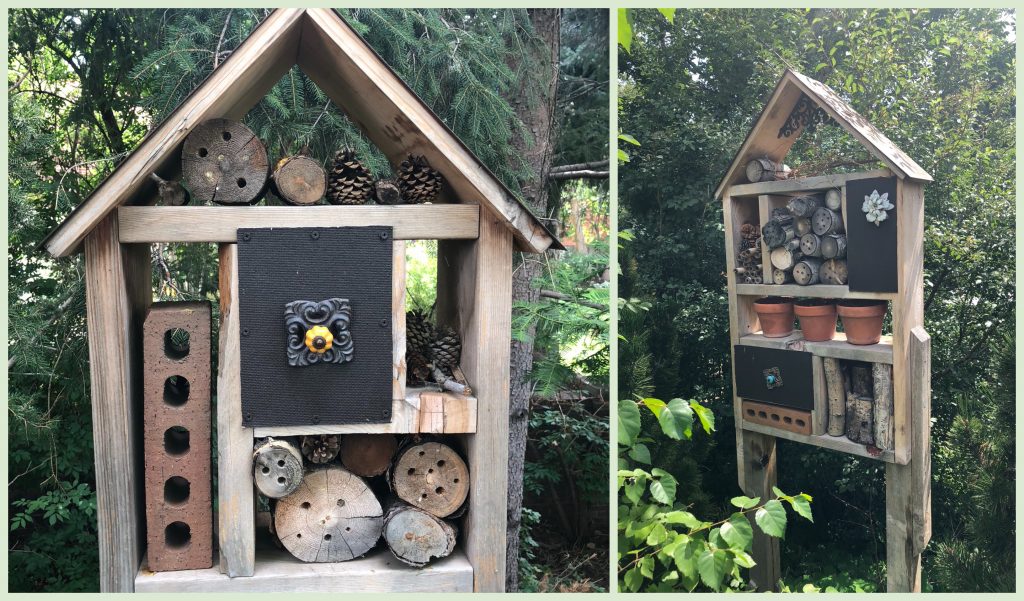I discovered my first insect hotel at the Denver Botanic Gardens in 2018. Since then, I’ve been enamored with them. Not only do insect hotels provide a bit of garden whimsey, but they attract solitary native bees, wasps, and other beneficial insects desperately needed for pollination.
D*e*s*p*e*r*a*t*e*l*y.
Pollinators are on the decline for various reasons—mostly due to habitat loss. Without pollinators, we may as well call it a day. Pollinators are essential to the creation and maintenance of the earth’s ecosystem. Eighty to ninety percent of all flowering plants need pollinators. Pollinators are responsible for 1 out of every 3 bites of food we eat.
This is not fake news. Take a look at this crop list from the University of Arkansas Research and Extension Office.
Umm. Coffee and watermelon?
Yikes.
What constitutes a pollinator?
We often think of honey bees, right? But a pollinator is anything that moves pollen from the male part of a flower (stamen) to the female part of the flower (stigma). Pollinators include birds, solitary bees, wasps, moths, spiders, lacewings, roll poly bugs, ladybugs, fireflies, bats, hoverflies, earwigs, small mammals, and the wind.
After seeing insect hotels in Denver, I attended my first make-and-take insect hotel class at the Botanic Garden of the Ozarks (BOGO). Before I show you the hotel I created, take a look at these examples in Denver.
These are very large and partially decorative, but even so, these Denver versions provide insect nesting places as well as education to those of us visiting the garden. It’s because of these that I first became interested in insect hotels.Continue Reading










